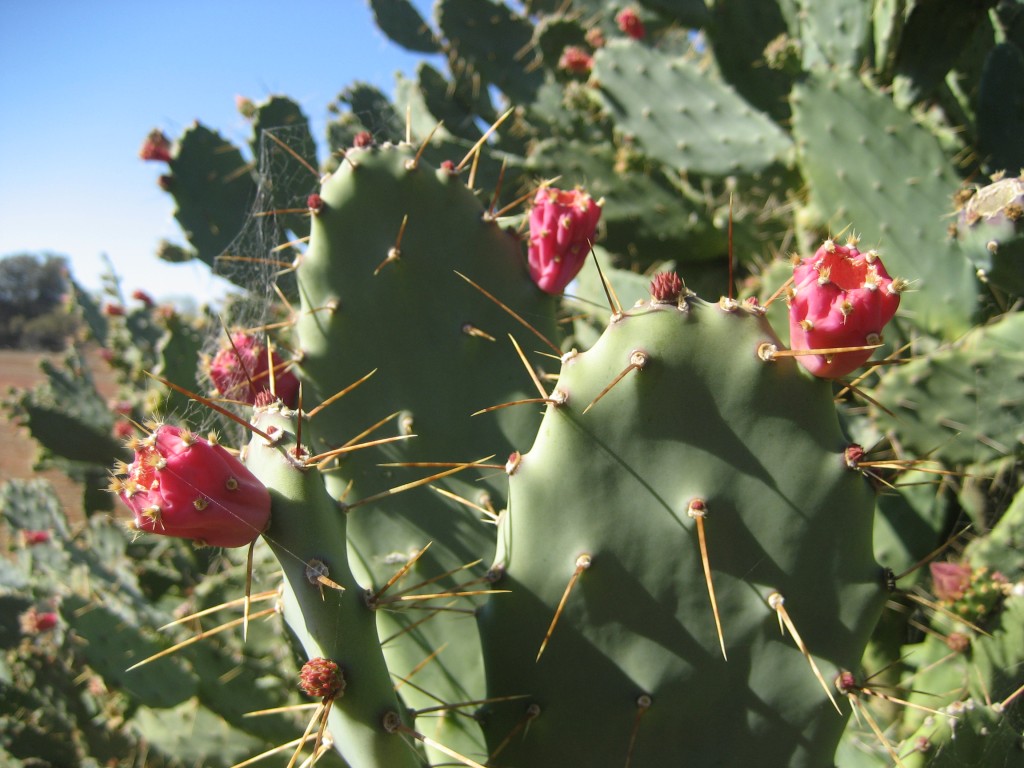Once a vision and strategy has helped identify the priority weeds to focus on, climate change adaptation options for methods of weed management can be determined.
Three basic approaches that could be taken for the implementation of control options in response to climate change are:
- Continue current control options
- Use control options suitable for current extreme events, and/or
- Develop new control methods adapted for climate change
Key weed control methods that require (re)consideration under climate change include:
- Quarantine barriers
- Eradication and/or containment
- Biological control
- Herbicides
- Cultivation

Opuntia elatior; Source: Rangelands NRM; Photographer: Andrew Reeves, DAFWA
Maladaptation means adopting a response to climate change that in the end is detrimental to agriculture or the environment. In the case of weeds, an example could include planting potentially threatening alien invasive species as a store of carbon.
For further information on adapting weed management methods to deal with climate change you can download the Weeds and Climate Change Technical Guide (PDF).
